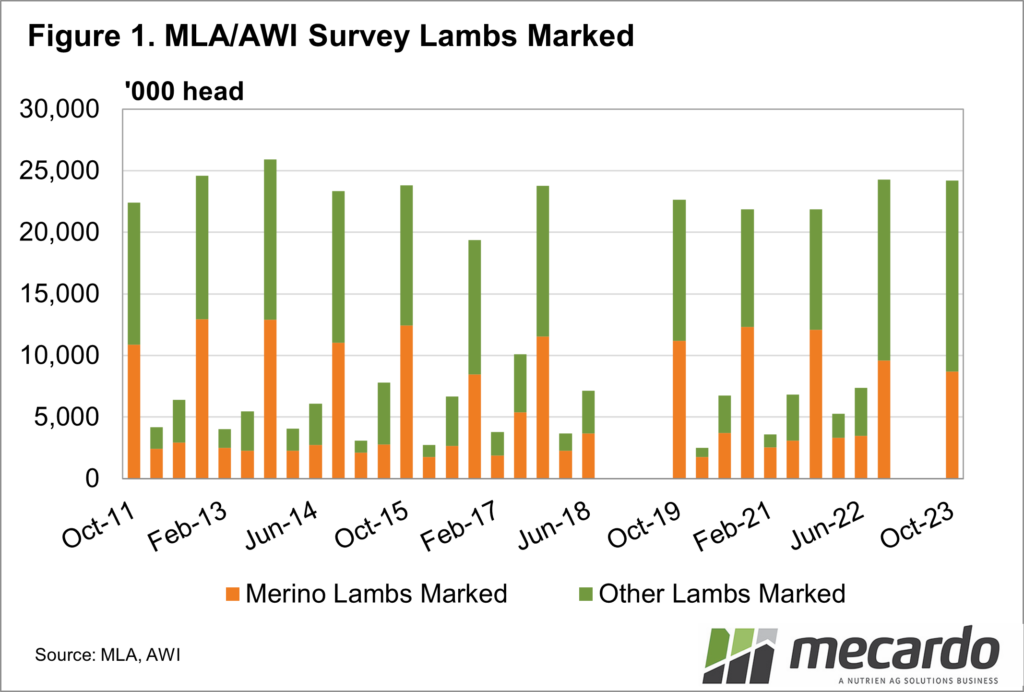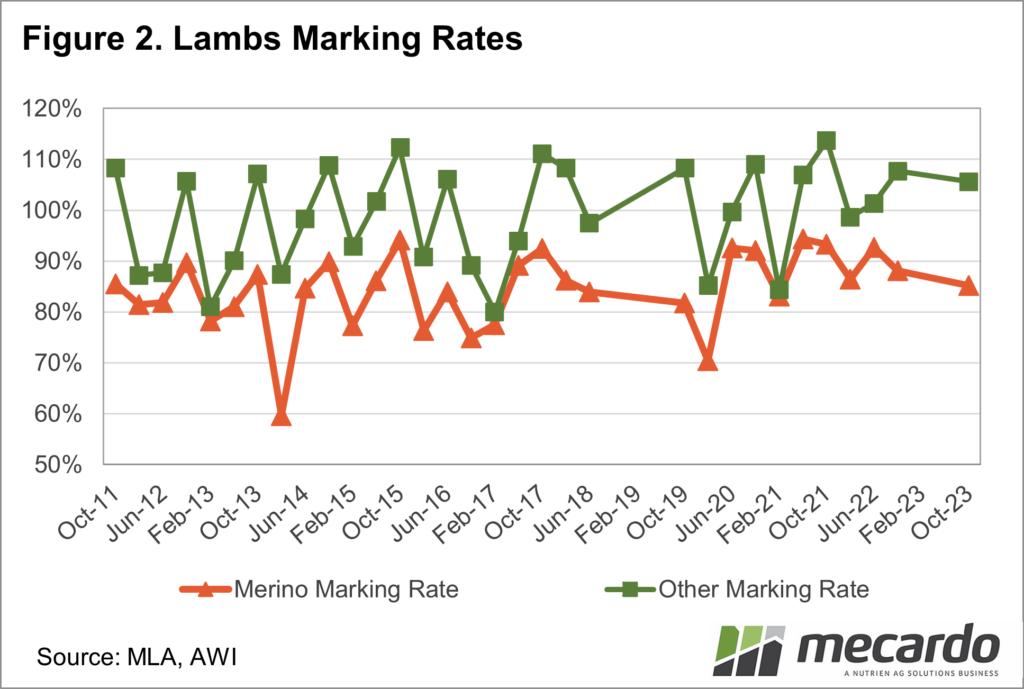The Meat and Livestock Australia (MLA) and Australian Wool Innovation (AWI) Sheep Producers Intentions Survey for October was released back in November. There was little fanfare, but this is one of the important data points to gauge supply heading into the new year.
A majority of the
lambs born in Australia hit the ground in the late winter and spring. As such the data collected in the October
survey gives a pretty good idea of how many lambs we can expect to hit the
market from November to the following June.
While the survey
questions seem to vary from survey to survey, making data analysis difficult,
we do get a consistent question on ewes
on hand, ewes joined to lamb, and lambs marked. There were 10.19 million Merino ewes joined to
Merino Rams, to lamb from June to September in 2023, producing 9.57 million
lambs.
Ewes joined to produce
‘other’ lambs totaled 14.68 million head, with 15.5 million ‘other’ lambs
marked. Figure 1 shows that the number
of lambs marked was similar to last year in total, but there were 8% more
‘other’ lambs, and 6% fewer merino lambs.
We can see a
relatively dramatic slide in merino lambs produced in the last two years. June to October Merino lamb markings have
fallen a massive 25% since 2019. There
has been a shift to producing ‘other’ lambs, which have seen a 35% increase in
production.
The lacklustre wool
prices, combined with strong lamb prices of recent years have seen more
producers heading towards producing lambs for meat, rather than sheep for wool
production.
Lamb marking rates
were down slightly on last year, and interestingly, at the lower end of the
scale for October markings.
Figure 3 shows the
number of breeding ewes on hand declined year on year in October. The dramatic fall from 2021 seems strange and
might have something to do with a change in data collectors. Even so, the 2.6% fall from October 22 ties
in with heavier sheep slaughter last year. Unfortunately, the survey didn’t split
breeding ewe numbers by breed as they did in the May survey.
What does it mean?
Before Christmas, we were talking about a lot of lambs exiting the system at lighter weights, without any real idea how many lambs were on the ground. The survey data suggesting a similar number of lambs were marked indicates that lamb slaughter will likely be tighter than last year for the next six months. This is certainly being reflected in prices at the moment.
Have any questions or comments?
Key Points
- The MLA/AWI Sheep Producers Intentions Survey was released in November.
- There were similar total lambs marked in from June to October, but fewer Merinos.
- Stronger slaughter with similar markings suggests supply will be tighter than last year.
Click on figure to expand
Click on figure to expand
Click on figure to expand
Data sources: MLA, AWI, Mecardo




